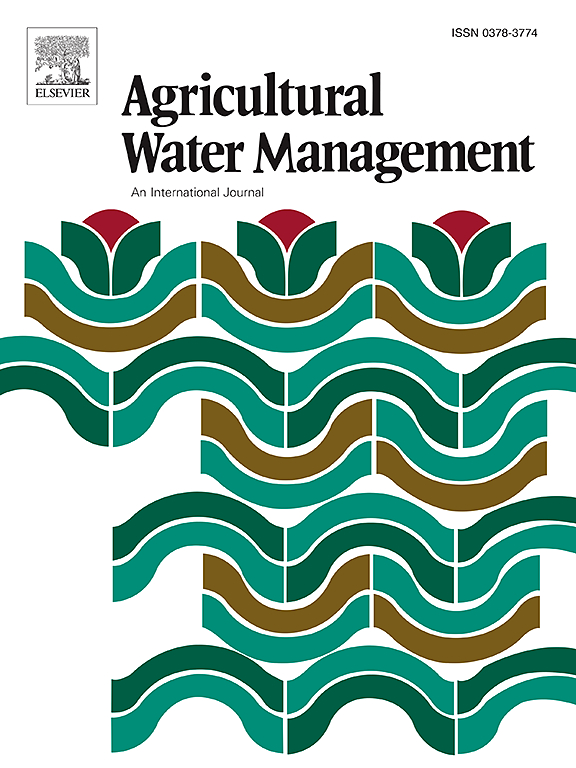Application of various canopy resistance calculation methods in vineyard evapotranspiration simulation at daily scale in Northwest China
IF 5.9
1区 农林科学
Q1 AGRONOMY
引用次数: 0
Abstract
Evapotranspiration (ET), as a key process in the water cycle and energy cycle, is closely related to the growth and yield of crops. As the basis of efficient irrigation decision, the accurate estimation of ET is critical for agricultural management measures. The Penman-Monteith (PM) model is widely used to estimate ET, for which the determination of canopy resistance (rc) is crucial. Variant formulas have been developed to calculate rc, making the selection of a module challenging. The suitability of methods of calculation of rc largely affects the simulation performance of ET. Here, the Jarvis (JA) model, the coupled surface resistance (CO) model, the Farias (FA) model, the Kelliher-Leuning (KL) model, the Katerji-Perrier (KP) model and the new coupling (N) model which considering interaction among different factors were used for rc calculation in a vineyard in Northwest China. The selected modules, with different theoretical basis, were embedded into the PM model for simulating the vineyard ET. By comparison of 5-year (2018–2022) measured daily ET with the Bowen ratio, a canopy resistance optimization method was developed. The model parameter optimization was based on the Bayesian method. The accuracy evaluation indicators included relative error (MRE , %), coefficient of determination (R2) and Wilmott consistency coefficient (D). The results showed that JA, CO and FA models exhibited varying degrees of overestimation of the vineyard ET; especially during the periods with low leaf area index (LAI ≤ 1.0 m2m−2), with MRE of up to 56.24 % (FA model). Then KL, KP and N models performed better overall, with error distribution curve peaks close to 0 at both low and high LAI periods. The error distribution curves symmetry of the last three models was not only better than the first three, but also had a narrower error distribution range. The KP model had the highest simulation accuracy, with the highest R2 and D (R2 = 0.83, D = 0.90 for the calibration period and R2=0.79, D=0.89 for the validation period), and the lowest MRE (21.72 % for calibration period and 19.81 % for validation period). It was therefore recommended to use the KP method to calculate rc in the simulation of vineyard ET in Northwest China. The results suggested that the selected method and degree of optimization rc had a significant impact on simulation ET model output. This is crucial for the development of efficient water-saving strategies for specific agricultural crops in specific soil and climatic conditions.
求助全文
约1分钟内获得全文
求助全文
来源期刊

Agricultural Water Management
农林科学-农艺学
CiteScore
12.10
自引率
14.90%
发文量
648
审稿时长
4.9 months
期刊介绍:
Agricultural Water Management publishes papers of international significance relating to the science, economics, and policy of agricultural water management. In all cases, manuscripts must address implications and provide insight regarding agricultural water management.
 求助内容:
求助内容: 应助结果提醒方式:
应助结果提醒方式:


